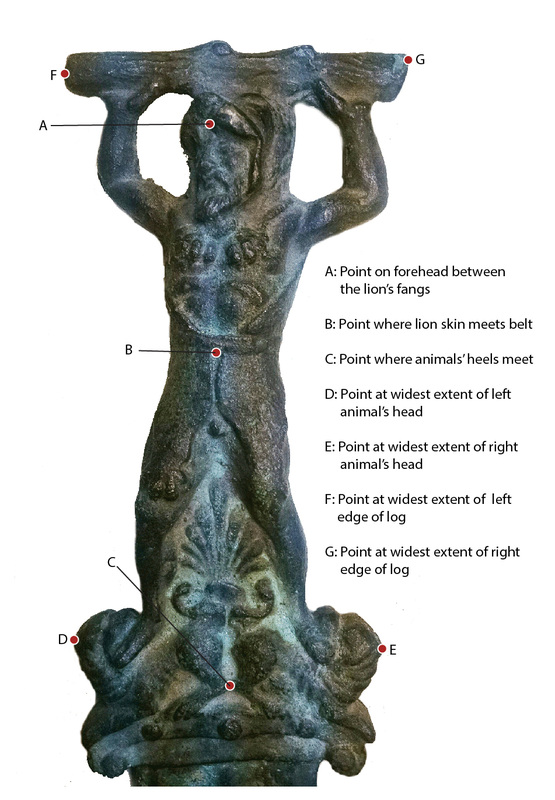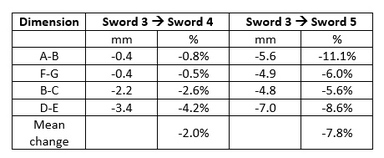The take-away point I'm getting is that size decrease is inevitable during metal casting. A given mass of metal will have a greater volume when molten then when solid, so the metal piece that is produced from a mold will be smaller when cold than the mold it filled up when molten. There is also the potential for molds made of ceramic to shrink while when they are produced.
Anyway, it appears that it's perfectly logical to expect a trend of decreasing size if a series of objects that was produced through a "chain" of copying. The first generation will be smaller than the original; the second generation will be smaller than the first, etc. The sources several of you provided suggest about 1-2% size difference between the mold and the cast is typical of copper alloys.
If these three swords represent different generations, how much size decrease was there between generations? I calculated the differences (in both millimeters and percentages) of the measured dimensions of two pairs: (1) the California sword (Sword 3) and the Italian eBay sword (Sword 4); and (2) the California sword and the Design Toscano sword (Sword 5). Here are those data:
The differences between the California sword and the Design Toscano Sword vary from 5.6% to 11.1%, with a mean of about 7.8%. Assuming a 1.75% decrease in size per generation, the Design Toscano sword could be fifth or sixth generation (with the California sword being "Generation 1"). A fifth generation sword would be expected to be about 93% the size of a first generation sword, assuming each generation is 98.25% the size of its parent.
I think the Cvet sword, the Spain sword, and the sword currently for sale on eBay (from Florida) could be members of a generation between the Italian eBay sword and the Design Toscano swords. These swords appear to be copper alloy swords with relatively "clean" blades missing the suite of anomalies that we're using to define the J Type. I've been calling this grouping "Type CS" in my head. If my hypothesis is correct, the dimensions of the Hercules on the Cvet sword should fall between those of the Italian eBay sword and the Design Toscano sword.





 RSS Feed
RSS Feed
